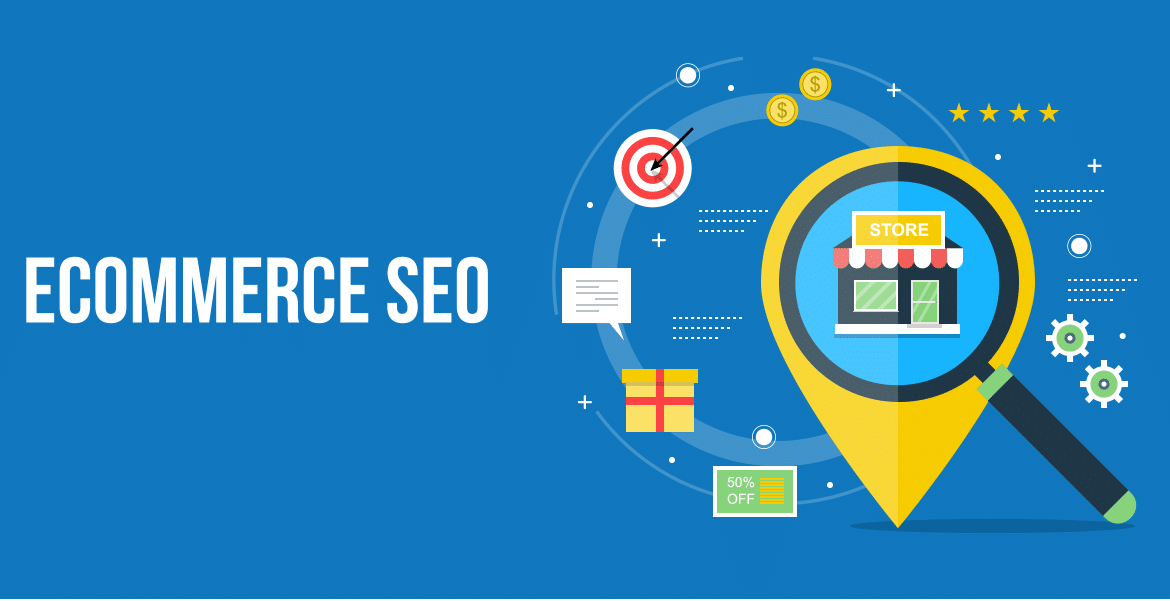Key Techniques and Best Practices for a Successful Ecommerce SEO Strategy
A successful ecommerce SEO strategy starts with understanding the importance of SEO and ecommerce website design. Organic search results get more clicks than paid ads, so having a solid SEO strategy and a website with a search engine optimized layout is one of the most effective ways to drive recurring, high-converting traffic and capitalize on the high ROI that comes from SEO.
Often overlooked in favor of social media and paid ads, SEO is actually the best investment for ecommerce businesses. It’s a crucial factor in driving traffic to your site and unlike paid ads, it doesn’t require continuous effort and investment. If you put in the initial investment and build a solid ecommerce SEO strategy, it will continue benefitting your business in the long run.
What are some ecommerce SEO strategies, techniques and best practices that will take your ecommerce business to the next level? Here are a few ways to build a good foundation for ecommerce SEO.
Make Sure You Have an Effective Ecommerce Website Design and Structure
When it comes to search engine optimization, your website design and structure play a huge role. How you set up your navigation, product pages, and category pages has implications for SEO. If your site is not structured properly, it can affect how Google categorizes it and, ultimately, that could mean you don’t show up in search results.
Marketing Websites ensures that doesn’t happen by helping you hit all the points of SEO and ecommerce website design:
- Simple site navigation
- Optimize site speed
- Improve user experience
- Use internal linking
- Build backlinks for your website
- Publish quality content
- Simple Site Navigation
Simple, straightforward navigation is best for SEO. It will be easier for Google and your visitors to find the information they are looking for if your site navigation is well structured and simple.
Ideally, you want to get to the product page in three clicks. Your home page should link to category pages which then link to product pages. Keeping it simple improves your visitor’s experience which is what Google wants and that means it’s good for SEO.
- Optimize Your Site Speed
If it takes too long for your pages to load, you will lose visitors and ruin your chances of ranking high in search results. Improve your website’s performance by optimizing the loading time of each page and the overall site speed. One way to do this is to optimize the images on your site. Choosing the right file format (usually JPEG or PNG) improves site speed.
Compressing your images and adding alt text improve accessibility and help Google better understand the images on your site. Using a tool like Google’s PageSpeed Insights can help you check your page load times and site speed.
- Improve User Experience
The better your user’s experience, the higher you will rank. A good user experience increases your click-through-rate and keeps users on your site. Simple navigation and site speed improve user experience.
Good design, such as using white space to make content easier to read, and using visually appealing images, videos, and screenshots are equally important.
Use subheadings to help Google understand your content and try to avoid using pop-ups since they tend to create a negative experience.
- Use Internal Linking
Internal links also help Google understand, categorize, and rank the content on your site. When used properly, internal links help prioritize information on your site and increase your ranking. You can also help rank pages on your site by adding internal links from high-ranking pages to those pages that need a boost.
- Build Backlinks for Your Website
Backlinks are a way to show Google that your site has credibility. A high number of backlinks can increase the chances of ranking higher in search results. However, you need to be careful because not all backlinks are created equal!
Focus on building high-quality, authoritative backlinks that have a positive impact. You can do this by creating unique, quality content that brings appropriate traffic. Weeding out harmful backlinks should be part of your link building strategy and should be done on a regular basis.
- Publish Quality Content
By now it should be obvious how important it is to Google that users find the helpful information they are looking for and that their experience getting to that information is a good one. This is key for SEO and ranking high in search results.
Publishing quality content in the form of well-researched, informative articles or blogs is a must. Google also prefers long-form content (2000 or more words) as they get more traffic and more shares. Remember to use target keywords with the right search volume and keyword difficulty.
Understand the Importance of Keyword Research
At the heart of any ecommerce SEO strategy is keyword research. Getting this wrong can have serious negative repercussions.
To make sure you’re hitting the right keywords, look at your category and product pages one-by-one to identify the right target keywords. You want product-focused keywords related to your brand, with medium to high search volume and low keyword difficulty.
There are a few ways to research keywords, find their difficulty and search volume, and reveal buyer intent. You can use tools like Amazon Keyword Tool and ahrefs Keywords Explorer as well as perform competitor research on Google. Just type your keyword into Google, choose a competitor that ranks higher than you and scan their site for potential keywords.
Optimize Your Product Pages and Category Pages
You cannot talk about ecommerce SEO without talking about category pages and product pages. The whole point of SEO is getting your customers to find your products! So, your effort should go into getting your product pages to rank really well. That means the right keywords in the right places so Google knows what your pages are about and you have a better chance of ranking higher.
Your title tags and meta descriptions should include target keywords, match search intent, and be clear and concise. Meta descriptions don’t directly impact ranking, but they do have an effect on the click-through-rate. The meta description is like a pitch that can influence a user to click on your site. It should provide an accurate summary and be under 160 characters so that it doesn’t get truncated by Google.
Optimize your product category page by using target keywords in the URL. Keep the URL short, clean, and concise. It’s preferrable to use words rather than long ID numbers. This helps users and search engines know exactly what the page is about and gets you to rank better in search results.
Content on your product pages is also a great SEO opportunity. Every chance to show what your page is about is a way for Google to categorize and rank your page. Make sure your product descriptions are well-written, informative, and customized.
Use your main keyword in the title and add Latent Semantic Indexing (LSI) keywords. LSI keywords are words and phrases related to your main keyword. For example, LSI keywords for ‘jacket’ could be ‘warm’, ‘padded’, or ‘feather down’. Google uses these as context to confirm what your page is about.
Finally, adding reviews, images, and videos to your pages are great for SEO. Reviews boost SEO because they create content for your product and they also encourage users to buy. That’s a win-win!
Takeaways for Ecommerce SEO
Building an ecommerce SEO strategy and understanding and applying techniques and best practices can be daunting. There is a lot to learn about SEO and you don’t want to negatively impact your business. Get off to a good start with Marketing Websites and the right ecommerce website design!




